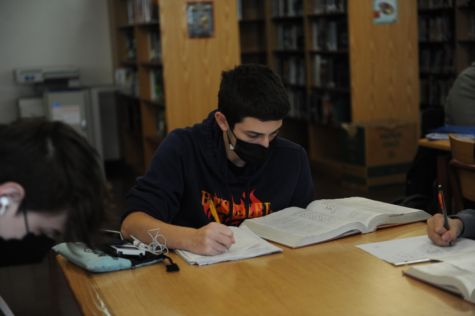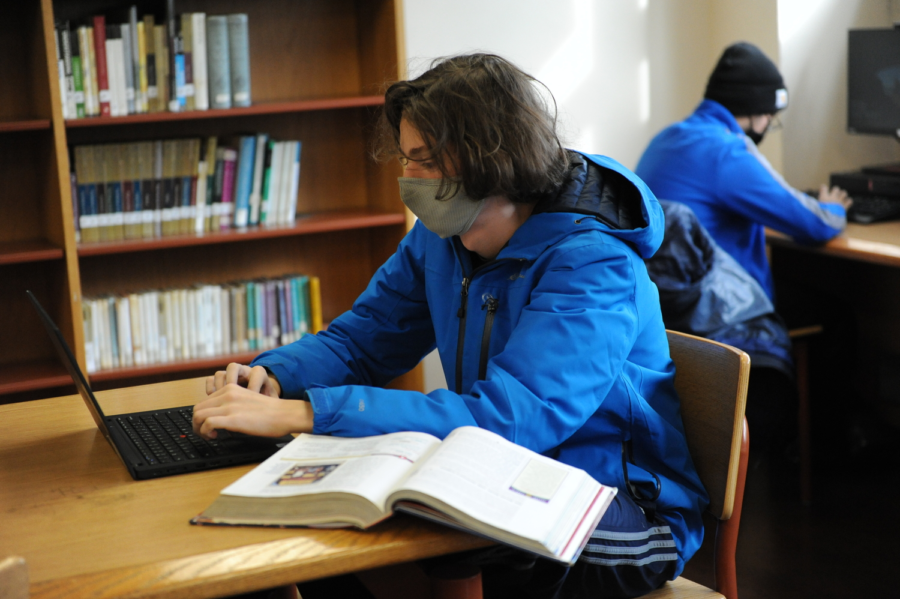History Textbooks: Full of Fact or Bias?
Textbooks are not the all-knowing sources we once thought them to be.
In a time where a wealth of information is only two clicks away, many students rely on the internet rather than textbooks.
Throughout our entire academic careers, we have come to associate the textbook as an undisputable source of factual and reliably sourced information. Yet these books are not always what they are made out to be. Many textbooks are products of bias, and are cluttered with mistakes. Due to our increasing reliance on the internet for our primary source of information, these errors continue to be ignored, which perpetuates a cycle of misinformation.
If you ask the average person about how they think textbooks are produced, they will usually only tell you about one small part of the process. “I don’t really know how textbooks are made. But I have a feeling that the information was written by historians who spend their college lives, and beyond, learning and researching that information,” Katie Kong ’22 said. This is probably the assumption most students would make, and it is correct for the most part.
In reality, textbooks are produced in four steps. First, authors, usually academics, write a national version of each textbook. Then, publishers customize the books to meet local standards for states and large districts. But, these changes are usually made without input from original authors. Step three requires state or district textbook reviewers to examine each book and ask publishers for additional changes. Finally, the textbooks are revised by publishers and sold to school districts.
Step three is where most of the bias is added, specifically by those who are selected to review the textbooks. Each state chooses who is a part of their review panel. For instance, California’s panel members are educators selected by the State Board of Education, whose members were appointed by former Gov. Jerry Brown, a Democrat.
On the other hand, the Texas panel is made up of educators, parents, business representatives, and a Christian pastor and politician who was appointed by a State Board of Education dominated by Republicans. As one can imagine, changes by each panel ultimately reflects each state’s political stance. Moreover, since textbooks are fighting a losing battle with the internet to be the primary source of information, publishers are happy to make adjustments to please policymakers and increase sales, even if the additions insert bias.
The extreme power each state holds has a tremendous impact on the mind set of the next generation of adults, voters, and policy makers. The ideals they learn in school will largely influence their political standing on highly controversial topics like gun control, abortion rights, and LGBTQ+ rights.

Missing information in textbooks also contributes to the distortion of facts. But, these differences are mainly due to state laws. For example, Texas textbooks include limited information about L.G.B.T.Q. issues, whereas California’s FAIR Education Act requires schools to teach about the contributions of L.G.B.T.Q. and disabeled Americans. Laws such as these contribute to the major size difference in California’s 842 page social studies framework in 2016 and Texas’s 78 page social studies standard in 2018.
“I think it’s sad that politics has such a noticeable impact on education. Textbooks shouldn’t omit information due to the actions of lawmakers or the political color of a state. Students should have access to information regardless of the state they live in so that they can create their own opinions,” said Tejas Ravi ’22.
But I must admit, bias in textbooks is unavoidable. After all, writers, from the get-go, must decide what information to include and exclude. Teachers have stepped up to attempt to bridge this gap. They are knowledgeable and often spot any mistake or bias from a mile away and bring it up to the class. “As for economics, I teach about the assumptions made in mainstream economics and welcome students to not personally believe in those assumptions. I also mention that there are alternative fields within economics such as Marxist economics, post-modernist economics or behavioral economics,” said Mr. Anthony Noody, a Social Studies teacher at Bronx Science.
Although the obvious method to avoid biased and inaccurate textbooks is to stop using them, textbooks are still important because they often contain historical documents and a diversity of voices and themes from history. So, instead of condemning all textbooks, students should be taught to recognize this bias and understand it. Fortunately, students start refining this skill in AP History courses in preparation for the DBQ portion of the AP exam where students must explain “how or why the document’s point of view, purpose, historical situation, and/or audience is relevant to an argument.” Additionally, to ensure that students are aware of the flaws of textbooks, the process of which textbooks are made and how bias is incorporated should be taught in middle schools or high schools.
All in all, although textbooks are fallible and controversial at times, they are still valuable resources. The only caveat is that students should know more about them! Students should be taught about the inaccuracies and biases in textbooks and learn how to use the bias to further their understanding of the text.
“I think it’s sad that politics has such a noticeable impact on education. Textbooks shouldn’t omit information due to the actions of lawmakers or the political color of a state,” said Tejas Ravi ’22.
Miaoting Zhen is a Managing Editor/Advisory Editor for ‘The Science Survey.’ She finds journalistic writing appealing because of its informative yet...
Tamar Padwa is a Chief Graphic Designer and Editor-in-Chief for ‘The Observatory’ yearbook. She is also a Staff Reporter for 'The Science Survey.'...
Susan Cohen is an Editor-in-Chief and Chief Graphic Designer for ‘The Observatory’ yearbook, as well as a Staff Reporter for 'The Science Survey.'...











